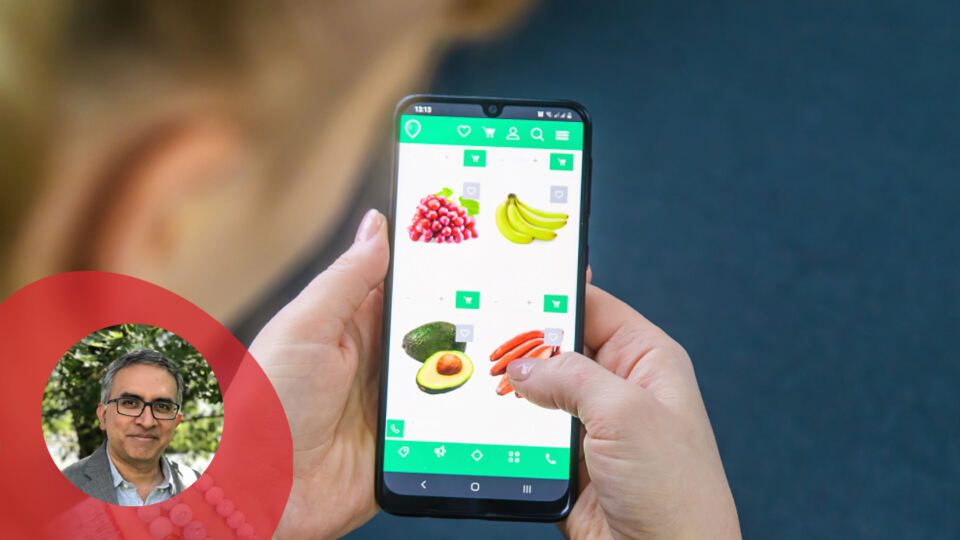Digital transformation in grocery has always lagged behind other retail sectors. According to McKinsey Research, ecommerce adoption in grocery was approximately 4% before the pandemic, while industries like beauty, apparel and electronics were around 20%. According to the same report, the pandemic forced shoppers to experiment with online retail across all sectors. Grocers are seeing anywhere from 9% to 12% of sales come from the online channels.
As grocery transformation continues, offering digital touch points is no longer an option, it’s an imperative. Grocers that delay the switch to an omnichannel strategy run the risk of losing customers to digitally savvy competitors. But incorporating omnichannel strategies and digital offerings often intimidates traditional grocers, who don’t understand that it’s not about reinventing the wheel — it’s about taking what the store already does well and optimizing it.
On the bright side, there are plenty of ways that grocers can go digital now, even if they aren’t ready to reinvent themselves in the ways many other retailers have. These low-stress, high-impact opportunities include digital coupons and ad flyers, buy online, pick up in-store and app innovations.
- Delight Customers with Digital Coupons
Promotions have always been a key sales tool for grocers. Most traditional grocers use weekly or monthly ad flyers to encourage customers to take a trip to the store and/or increase basket sizes. Yet these physical flyers often waste resources, particularly since paper circulars only lift sales by less than 1%.
On the other hand, Birdzi found that digital coupons and ad flyers can result in incremental sales lifts of up to 15%, because digital coupons can incorporate personalization. Traditionally, customers had to shuffle through a flyer to find the coupons that applied to their cart. But when grocers gain customer insights through digital touch points, they can create more targeted campaigns with promotions the shopper is actually interested in.
Targeted promotions will increase customer loyalty and improve a variety of other key metrics for retailers. For instance, Birdzi found that digital coupons and ad flyers improved the number of categories shopped by 38.2%, trips per shopper by 23.6% and spend per shopper by 16.6%.
- Create Convenience with BOPIS
For many retailers, buy online, pick up in-store (BOPIS) was the first omnichannel advancement implemented during the beginning of the COVID-19 pandemic. This pickup option encouraged shoppers to interact with a grocer’s ecommerce platform without requiring the grocer to invest in diversified fulfillment capabilities.
With the supply chain disruptions facing the retail industry today, BOPIS has become incredibly valuable yet again. By enabling online ordering, grocers created convenience for shoppers, and in the process gathered additional data and insights on each customer and their unique omnichannel shopping journey.
In-store experiences can be enhanced with the data gained from ecommerce as well. What categories do shoppers spend more time exploring? What products do shoppers search for most? Answers to questions like these can inform in-store layout and promotions.
Finally, BOPIS opportunities still create traffic for the store. Unlike a full shift to online ordering and delivery, customers will still have to go to the brick-and-mortar location, opening the door for impulse purchases and product discovery.
3. Offer Solutions that Align with Customer Behavior
Even customers who prefer the traditional shopping experience could be open to a few low-lift innovations. For example, according to Pew Research, 85% of Americans have a smartphone. That means that grocers can reach customers through this channel; outreach can come in the form of a branded app, designed to make the in-store and online shopping experience easier. The app could improve convenience by including information on where an item can be found in the store, or improve basket sizes by including digital coupons, shopping lists or recipes.
Similarly, cellphones are also a means of communication with customers. Grocers can send SMS messages featuring coupons that are easy to display at the point of sale. Or they can feature reminders prompting customers to buy the items they usually buy at a certain time of the month.
These app and SMS innovations are easy for customers to adapt to and don’t require shoppers to change their behaviors or adopt a new technology. Optional digital touch points like apps create a seamless way for grocers to enhance their business without ostracizing customers who prefer the traditional shopping journey.
Even the Smallest Step Makes a Difference
Not every consumer is interested in reinventing their approach to grocery shopping, but as convenience continues to be a top priority for shoppers, low-lift technological innovations will create positive impacts for even the most traditional grocers. Innovation does not have to involve grand gestures — creating unique experiences can simply involve implementing smaller, targeted campaigns that enhance the customer experience to the fullest.
Shekar Raman is CEO and Co-founder of Birdzi, a grocery retail AI solutions company that was inspired by an idea his 11-year-old daughter had about locating products in the supermarket. He is passionate about building data-driven technologies leveraging AI and machine learning to help retailers and brands elevate the customer experience. Raman began his career working on the Human Genome Project at the Dept. of Human Genetics, Univ. of Pennsylvania, developing algorithms for protein modeling. He was part of some of the pioneering groups (early 1990s) in BioInformatics at UPenn, and at the Dept. of Human Genetics, UNLV, where he applied speech recognition techniques to identify and classify genetic sequences. He then continued onto AT&T Bell Labs, working in the Speech Recognition group as a consultant developing data collection algorithms, where he also acquired significant expertise in systems engineering. He then later moved on to Systems Engineering, architecting and implementing infrastructure solutions for a large Fortune 500 company working in both consulting and management roles.




